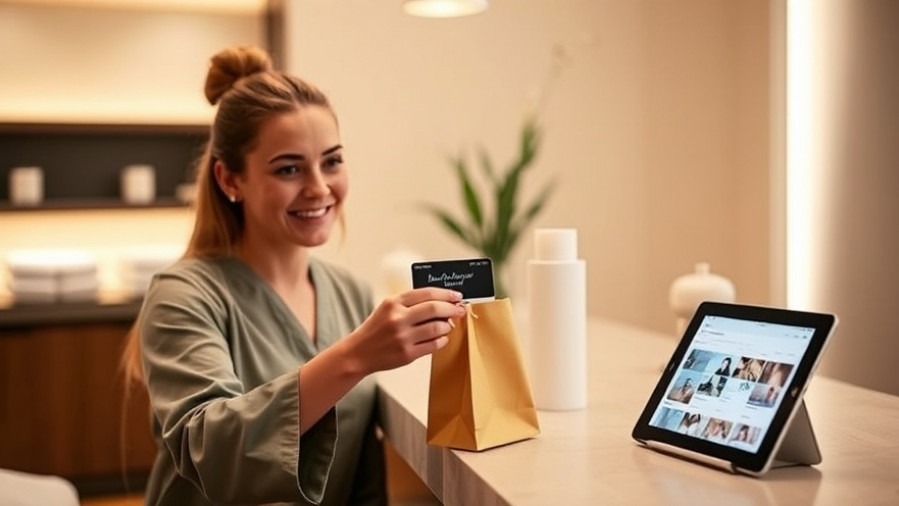
The Evolution of SEO: How Spas Can Adapt to a Smarter Digital World
The way people discover spas online is changing faster than ever. Search Engine Optimization (SEO)—once just about keywords and backlinks—is now shaped by artificial intelligence (AI), voice search, and personalized data.
For spa owners and wellness managers, that can sound overwhelming. Yet, beneath the jargon is a simple truth: AI is redefining how clients find, choose, and stay loyal to your spa. Understanding this shift can help you build stronger relationships and create marketing that feels as natural as your treatments themselves.
AI’s Double-Edged Sword: Friend or Foe?
AI isn’t something to fear—it’s a tool. Think of it as a smart assistant that can help you better understand what your customers want. But like any tool, it’s only powerful when used with skill and intention.
Many spa owners are tempted to let AI do everything—from writing blog posts to crafting social media captions. That can save time, but there’s a hidden risk: too much automation can make your brand sound robotic or impersonal.
“AI should amplify your voice, not replace it,” says Dr. Marie Haynes, SEO consultant and founder of Marie Haynes Consulting Inc., known for her research on Google’s E-E-A-T (Experience, Expertise, Authoritativeness, and Trust).
“Google rewards genuine expertise and trust signals—something AI alone can’t fake.”
Dr. Haynes’ point rings especially true for spa businesses, where credibility and care are everything. When clients look up treatments like LED facials or lymphatic drainage massage, they want to know the information comes from real practitioners.
In other words, let AI handle the busywork—data analysis, scheduling, even first drafts—but keep your personality front and center. Share your insights, stories, and client experiences. That human touch is your competitive edge.

Making Data Work for You
AI’s real magic lies in its ability to make sense of data. Every click, booking, and review contains clues about what your clients love. Instead of guessing, you can now use analytics tools (like Google Search Console, ChatGPT-powered dashboards, or HubSpot Insights) to see patterns.
For instance, you might learn that:
searches for “couples massage near me” spike before Valentine’s Day,
clients who book a facial often return within 30 days for a peel, or
posts featuring aromatherapy tips get 40% more engagement on Instagram.
With that knowledge, you can adjust your SEO and marketing campaigns accordingly—building landing pages, writing blogs, and creating offers that match real demand.
“Data tells you what clients do, not just what they say,” notes Neil Patel, co-founder of NP Digital and one of the world’s top SEO strategists.
“The spas and salons that pay attention to their analytics can double their organic traffic simply by aligning their content with customer behavior.”
So if you notice your website visitors spend more time reading about stress relief, that’s your cue: highlight treatments that calm the nervous system, add blog posts about relaxation techniques, or create a series on mindfulness in spa care.
When data and intuition work together, marketing becomes a form of service—not sales.
From Algorithms to Authenticity
There was a time when SEO meant stuffing pages with keywords like “best day spa Sacramento.” Those days are gone.
Today’s algorithms prioritize context and credibility. Google’s AI systems, such as RankBrain and BERT, interpret the meaning behind phrases. These systems now operate under Google’s broader Gemini family of AI technologies—meaning the underlying approach continues to evolve, but the goal remains the same: to understand what users truly mean, not just what they type.
If you’re writing a blog about cryotherapy or cupping, focus on educating clients in plain English:
What does it feel like? Who should try it? What benefits are backed by science?
The more your content reads like a friendly conversation with a knowledgeable professional, the better it performs.
This shift actually benefits spa owners. Clients don’t just want to “book now”—they want to learn, trust, and connect. Educational articles, treatment guides, or even short Q&A videos all build authority while feeding the SEO algorithms what they crave most: authentic expertise.

Predictive Analytics: The Future of Client Relationships
Imagine knowing your client’s next booking before they do. That’s where predictive analytics comes in.
AI platforms like Mindbody and Mangomint are integrating predictive tools that forecast client behavior based on previous visits. For example, if a guest books a deep tissue massage every six weeks, the system can automatically remind them when they’re due—or suggest a complementary service like an infrared sauna or CBD enhancement.
This proactive approach not only fills appointment gaps but also strengthens loyalty. Clients feel seen and cared for, not marketed to.
“Personalization is the new SEO,” explains Ann Smarty, SEO and content strategist at Internet Marketing Ninjas.
“Search engines and customers both reward brands that understand intent and deliver helpful, personalized experiences.”
For spas, that means using your website and CRM tools as a feedback loop: every review, booking trend, and click should inform your next post or offer.
The Power of Blended Marketing
Even in an AI-driven world, human connection is still the heart of the spa experience. The smartest spa marketers are finding ways to merge traditional relationship-based marketing with digital innovation.
For instance:
Sending handwritten thank-you cards after a client’s first visit.
Offering digital loyalty points redeemable for real experiences.
Featuring your therapists in short Instagram Reels explaining their favorite techniques.
These gestures build emotional trust—the kind no algorithm can replicate.
When paired with data-driven insights, they create a balanced ecosystem: digital tools attract attention, while authentic care builds retention.

Learning from Real-World Examples
Across the spa and wellness industry, more businesses are experimenting with AI tools in practical, everyday ways—and the results are worth noting.
For example, some spa teams have started using AI-powered chat assistants to handle common booking questions such as hours, services, and policies. By automating these simple interactions, front-desk staff have more time to focus on guests in the lobby or follow up with returning clients. The outcome? Faster responses, smoother operations, and happier customers.
In another instance, spa marketing managers are using AI-driven analytics tools to identify which treatments gain the most traction online. When they notice a spike in searches or social engagement around a topic—say, “skin barrier repair” or “lymphatic drainage massage”—they quickly create fresh content or limited-time packages to match that interest. The added relevance helps boost traffic and bookings simultaneously.
Meanwhile, others are incorporating personalization features into their booking systems, using data from past visits to suggest follow-up treatments or complementary upgrades. A guest who typically books a deep tissue massage might receive a gentle reminder to try a heat therapy enhancement or a targeted stretching session at their next appointment.
Each of these examples shows how combining technology with human awareness can enhance both efficiency and experience. AI doesn’t replace the warmth and intuition that define a spa—it simply helps amplify them.
Demystifying AI Tools for Spas
Here’s a breakdown of how some of today’s most useful AI tools can support spa marketing—without losing the human element:
Tool |
What It Does |
How Spas Can Use It |
|---|---|---|
ChatGPT / Jasper / Writesonic |
Generates content ideas and drafts |
Brainstorm blog outlines, not full automation—always add your voice |
SurferSEO / Clearscope |
SEO content optimization |
See which keywords and topics competitors rank for |
Canva AI / Adobe Firefly |
Visual content creation |
Design social posts and print materials faster |
Google Analytics 4 / Looker Studio |
Behavior analytics |
Understand where visitors come from and what keeps them engaged |
Mindbody / Mangomint AI Insights |
Predictive bookings |
Anticipate client return cycles and preferences |
Start small—choose one or two tools that genuinely simplify your workload, not complicate it.

Action Steps for Spa Professionals
Audit your website. Is your content educational, clear, and written in your brand’s tone?
Use analytics to listen. Identify your top-performing pages and replicate their structure and style.
Experiment with AI. Try it for research or first drafts, but always polish with human warmth.
Stay consistent. SEO rewards steady updates over sporadic bursts of content.
Keep learning. Google’s algorithms evolve monthly; staying informed keeps your spa competitive.
A Balanced Future
The evolution of SEO isn’t about replacing humans with machines—it’s about combining both to create something better. AI can analyze data faster than any person, but it can’t replicate your empathy, intuition, or healing touch.
When you align modern tools with timeless hospitality, your marketing becomes as rejuvenating as the services you offer.
So take a deep breath, light a candle, and dive into your next marketing update with confidence. The digital world may be evolving, but your spa’s story—and the people behind it—remain its most powerful SEO asset.
---
Authored by the Spa Front News Editorial Team, bringing readers in-depth insights and emerging trends from across the global spa and wellness industry.
 Add Row
Add Row  Add
Add 




Write A Comment